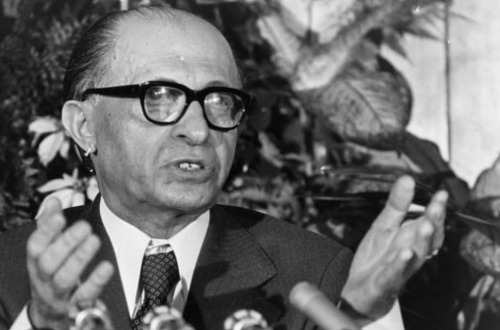This is a cross-post from Futile Democracy
It is often called the greatest story ever told, and we’re all familiar with the traditional sequence of events. The Christmas story; from the immaculate conception, the journey on a donkey to Bethlehem, the shepherds tentatively watching their flocks by night, the three wise men guided by a mystical star, no room at the inn, the stable, the manger, the gold, frankincense and myrrh; the story flows as if a continuous narrative. What few recognise is that the traditional narrative, is not a single story told in the Bible, but parts of two stories from two often irreconcilable gospel accounts of the birth of Christ, sewn together to forge an entirely new story.
The gospel of Mark is traditionally believed to be the earliest gospel, though the writings of Paul predate Mark by a couple of decades. On the birth of Jesus, Mark is silent, but Paul isn’t. In Galatians 4:4, Paul writes:
“But when the set time had fully come, God sent his Son, born of a woman, born under the law”
– There is no suggestion of a virgin birth. Paul does not think it important to mention. Paul then expands on the lineage of Jesus in the Epistle to The Romans 1:4:
“…concerning his Son, who was descended from David”
– This lack of any sort of mention of a virgin birth, is repeated in Mark, who doesn’t seem to see the need to even mention Jesus’ birth in the first place. For me, this suggests that the idea of the virgin birth, was not something early Christians had any notion of. It came later. This is further backed up by acknowledging descent from David, in Joseph’s line.
Like ‘Romans’, Luke and Matthew – the only gospels to contain the virgin birth – also give genealogies of Jesus, that place his bloodline as that of Joseph, through David, to Abraham (Luke takes the lineage further back to Adam, to signify the son of mankind, whilst Matthew sticks to Abraham, to signify the son of the Jews). Interestingly, Joseph Tyson writing in his book “Marcion and Luke-Acts: a defining struggle“, makes the case that the gospel of Marcion – a gnostic text, and almost identical to Luke except missing the nativity – predates Luke, and that Luke was written with Marcion’s teaching in mind, around 125ad. If that’s the case, then only Matthew mentions the virgin birth. One must ask whether the virgin birth was ever supposed to be included in the Christian story of the birth of Jesus.
Nevertheless, as of the gospels that made the finished Bible, only Matthew and Luke contain the story of Jesus’ birth, and often the two are entirely at odds. Over the years, the two stories have become entwined at parts, and kept distant at other parts, to create a sort of hybrid story that is often taught as definitive.
We first hear an account of the birth of Jesus from the beginning of the gospel of Matthew.
For Matthew 2:1, Jesus is born in Bethlehem during the reign of Herod. The story of the wise men sent by Herod to find the baby follows from this. Matthew 2:10-12 tells us that the wise men – having seen Jesus – were warned by an angel not to return to Herod, and so they departed and went their own way. Herod, feeling betrayed, sends out a decree that all male babies under two years old in Bethlehem must be killed. To escape this, Joseph, Mary, and Jesus escape to Egypt where they live until Herod is dead, they then return to Nazareth. This isn’t mentioned in any other Gospel, and has no basis in historical reality. In fact, unaware of this crazed child murdering venture that Herod undertakes, Luke has Jesus, Joseph and Mary returning to Nazareth soon after the birth, with absolutely no threat to their lives.
Indeed, for Luke, the story is entirely different. Luke begins with a detailed story of the miraculous birth of John the Baptist. By the time Jesus is born, Herod has been dead for years. For Luke, Jesus is born in Bethlehem, not during the reign of Herod, but during the governorship of Syria by Quirinius. Quirinius – a name not at all associated with the Christmas story – was a Roman Senator sent to Syria after the exile of Herod. It is during the reign of Quirinius that Luke speaks of an empire wide Roman census that required families to return to their ancestral homeland. And since Joseph was descended from David, his family therefore leave Nazareth for Bethlehem – the city of David. This is how Luke places Jesus in Bethlehem at the time of his birth. Matthew does not mention the family traveling to Bethlehem, for Matthew, they’re already in Bethlehem, in a house.
The problem also with Luke’s more descriptive account, is that the actual historical census of Quirinius that took place in 6ad (two years after the death of Herod) did not apply to non-Roman citizens, and did not apply to the whole empire, nor did any Roman census ever require people to return to the homeland of long dead ancestors.
As mentioned above, in Matthew, Jesus is born in a ‘house’ in Bethlehem. There is no mention of a long journey, on a donkey, from Nazareth. There is no manger, nor stable. There is no reason to assume from Matthew’s account that the house is anyone elses. From Matthew’s account, the family live in Bethlehem, and Jesus is born in the house in Bethlehem. The reference to the inn, and the journey from Nazareth, are derived entirely from Luke.
So, so far the Christmas story contains Herod and the wise men from Matthew – but not mentioned in Luke – and the travel from Nazareth to Bethlehem and the manger from Luke – but not mentioned in Matthew.
A glaring omission from the Christmas narrative, is that of John the Baptist. The story of Mary’s cousin Elizabeth (who is barren) and her husband Zacharias, mother and father of John the Baptist appears to us in Luke, and takes up the entire first chapter. For Luke, the birth of John the Baptist is given more prominence and in greater detail, than the birth of Jesus. Luke therefore seems to be suggesting that John is a vital precursor to Jesus, and integral to the story.
The story in Luke tells us that both Elizabeth and Zacharias are in old age and that Elizabeth is barren. They are visited by an angel who informs them that they will have a child and to name him John. Zacharias questions the angel, and so as a particularly cruel and unnecessary punishment, the angel renders Zacharias mute, until John is born. This was in the time of Herod – so, whilst Luke does not mention Herod in the context of Jesus birth, he does mention Herod elsewhere. Matthew on the other hand, doesn’t mention Elizabeth or Zacharias at all. Curiously, Matthew picks up the story of John the Baptist, when John is an adult. Apparently one miraculous birth is enough for Matthew.
So, to summarise, the stitched together Christmas story that we all know runs as follows:
In the time of Herod (Matthew 2:1), Mary is visited by an angel who tells her that she has been chosen as the mother of the son of God (Luke 1:27-38). Mary and Joseph travel to Bethlehem (Luke 2:1-6). Jesus is born in a manger (Luke 2:7) in a stable (neither account), because there is no room at the inn (Luke 2:7). Three wise men were sent by a very jealous King Herod to find the child, they bring gifts of gold, frankincense and myrrh (Matthew 2:7). They follow a star (Matthew 2:10). They arrived at the stable (neither account mentions a stable) and gave their gifts. Shepherds watching over their flocks by night were visited by an angel who told them all about the birth of Jesus. They decided to investigate for themselves (Luke 2:9-20). After visiting Jesus, an angel visits the wise men and tells them not to go back to Herod (Matthew 2:12). And everyone lived happily ever after.
This post appeared last year but – it’s seasonal! Do read the rest of the post here.


